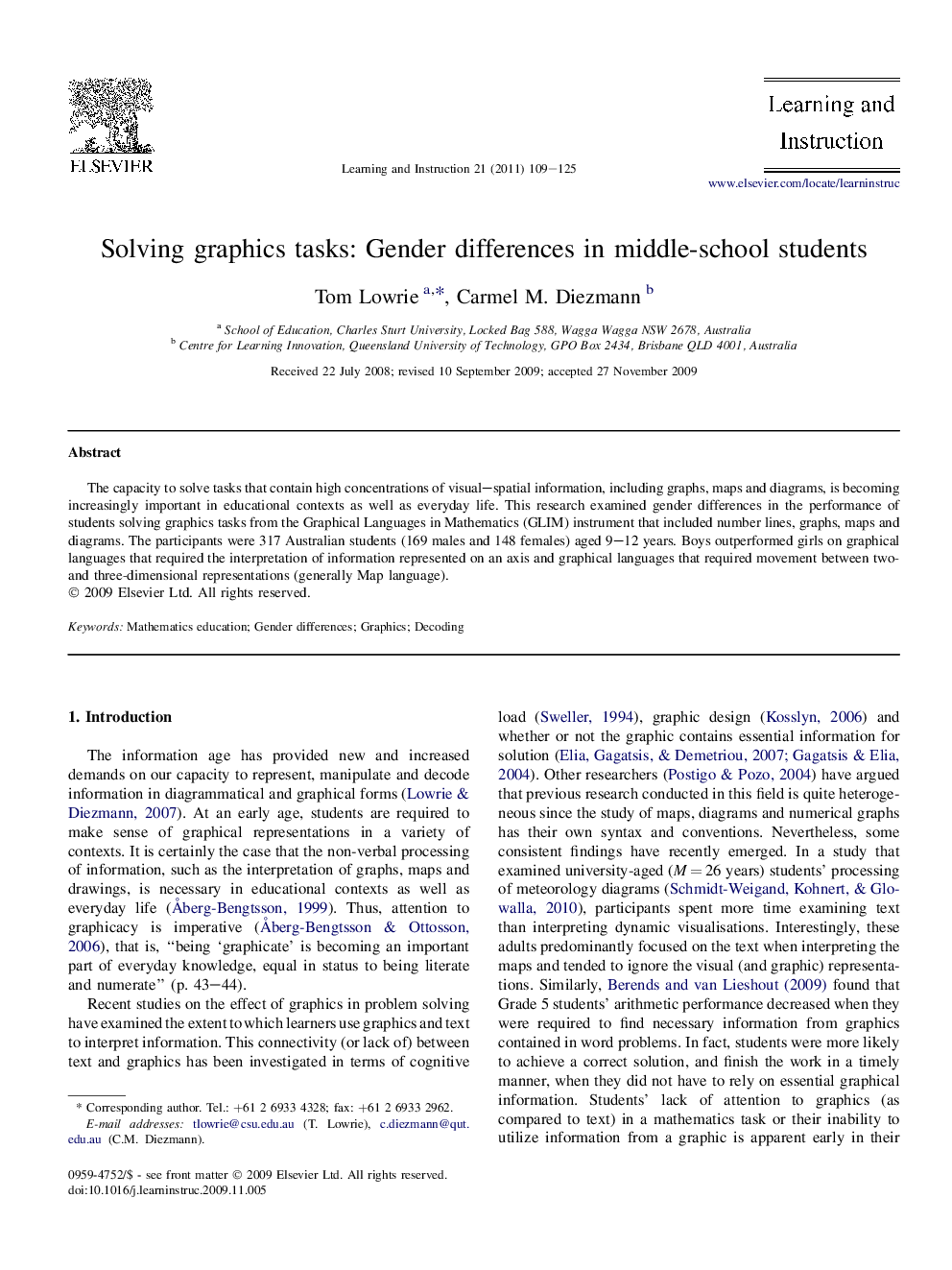| Article ID | Journal | Published Year | Pages | File Type |
|---|---|---|---|---|
| 365852 | Learning and Instruction | 2011 | 17 Pages |
The capacity to solve tasks that contain high concentrations of visual–spatial information, including graphs, maps and diagrams, is becoming increasingly important in educational contexts as well as everyday life. This research examined gender differences in the performance of students solving graphics tasks from the Graphical Languages in Mathematics (GLIM) instrument that included number lines, graphs, maps and diagrams. The participants were 317 Australian students (169 males and 148 females) aged 9–12 years. Boys outperformed girls on graphical languages that required the interpretation of information represented on an axis and graphical languages that required movement between two- and three-dimensional representations (generally Map language).
